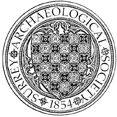Whitebeech, Chiddingfold
Fieldwalking survey by T Howe of SCC. A training exercise in conjunction with D & A Graham of SyAS catalogued a large amount of material, the results of which were plotted out to identify more precisely the location of the large Roman villa complex, known to exist in the area following excavations in 1888-9. Evidence for a probable Mesolithic site was also identified. (362)


